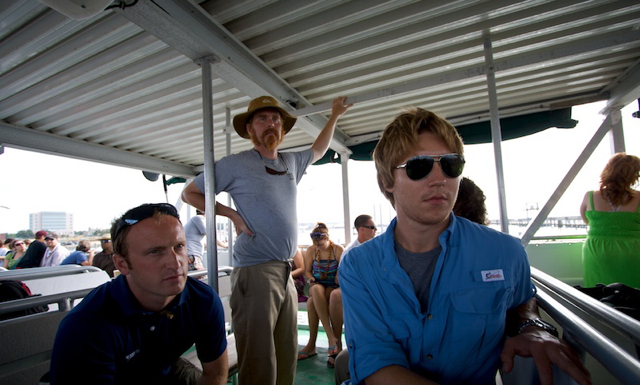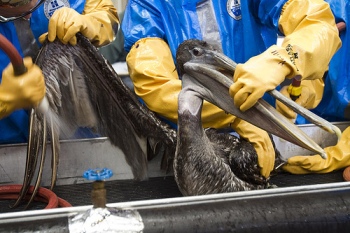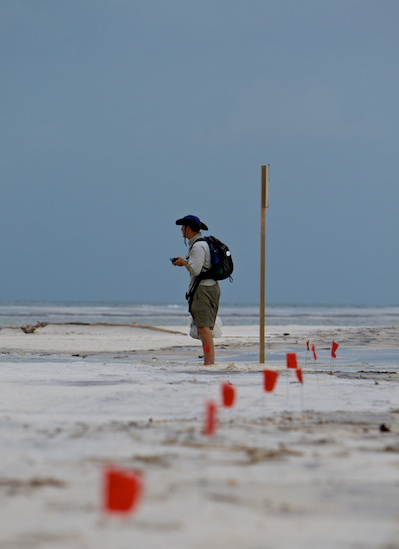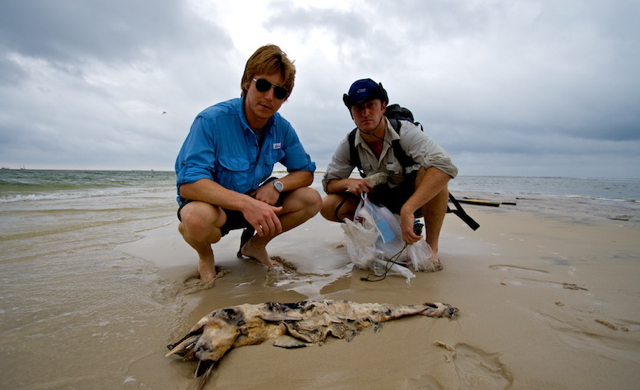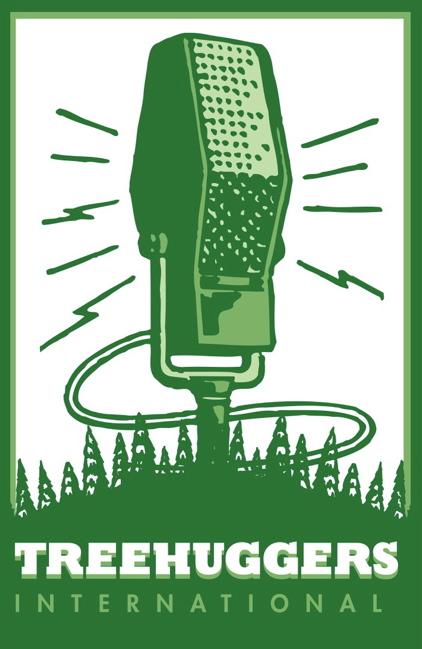Below the Surface at the Gulf of Mexico
August 13th, 2010
Podcast: Download (Duration: 35:19 — 32.3MB)
Jared Criscuolo from Below the Surface
Treehuggers International welcomes Below the Surface co-founder Jared Criscuolo, who talks about the organization he established with fellow Surfrider activist Kristian Gustavson.
From Kristian’s introduction to the Mississippi Delta during Below the Surface’s Downstream Campaign, to the duo attending a town hall meeting in Mississippi and a strange visit to Ship Island in the Gulf Islands National Seashore in the midst of the spill, Jared discusses how the BP oil disaster is inexorably affecting a region wholly dependent upon the sea, from oil and gas extraction to generations of deep-sea fishermen and wetlands shrimpers.
More Than the Sea Can Bear
After an unprecedented three-month deluge of millions of barrels of crude oil into the sea, the immediate crisis of the BP oil spill has come to an end with the capping of the blown-out Macondo well on the floor of the Gulf of Mexico, but the clean-up and recovery of the Gulf Coast and the vast, affected areas of the Gulf of Mexico will be going on for months, if not years.
The BP spill has already become the worst maritime oil disaster in history, far eclipsing the notorious 1989 Exxon Valdez tanker spill in Alaska’s Prince William Sound, and the 1969 Santa Barbara Channel oil well blowout, which to this day continues to be the source of layers of sticky oil embedded in the sand of Santa Barbara beaches, and tarballs washing ashore along California’s Central Coast.
The economic impact of the BP oil spill on Gulf Coast communities became painfully clear in the weeks after the collapse of the Deepwater Horizon. Dozens of popular beaches and seaside communities in four states have been affected, with many locales off-limits since spring, spelling disaster for thousands of regional merchants which depend upon tourism to see them through the year.
The impact to Gulf Coast fishing may even be more long-lasting, as fishermen struggle to find available harvest in the midst of ruined oyster beds and shrimping grounds in the Gulf Coast’s oil-soaked wetlands, while deep sea fishing has been reduced to starvation, with over one-third of the Gulf of Mexico now closed to commercial fishing.
The final toll on wildlife has yet to be determined, but it may be more than we, or the sea, can bear. The total number of brown pelicans, sea turtles, crabs, otters, dolphins, and whales lost may never be known, and concrete numbers remain hard to come by, especially with hundreds of washed-up or oil-ridden corpses hidden or removed by BP or government officials, often in roped-off areas out of sight from journalists and the public. The calamitous impact on fish is simply too early to tell, as vast undersea plumes of oil, some stretching thousands of feet deep, lurk just beneath the surface polluting, contaminating, and killing. The effects of oil-dispersing chemicals on marine life, sprayed onto the surface of the Gulf of Mexico for months on end, also has yet to be fully determined.
Below the Surface
Jared Criscuolo and Kristian Gustavson recently returned from an emergency trip to the Gulf of Mexico as part of their work promoting water conservation and improving water quality in rivers and oceans with their non-profit organization, Below the Surface.
The two met while doing work for the Surfrider Foundation, and upon forming Below the Surface began a number of high-profile expeditions of some of the wildest and most at-risk waterways in the nation, to highlight the need for clean and responsible water policies from the headwaters of creeks and streams to the mouths of the biggest rivers.
Kristian first explored the Gulf Coast region and the Mississippi River as part of Below the Surface’s Downstream Campaign, followed by an expedition of the Atchafalaya River, a distributary of the Mississippi and one of Louisiana’s last wild waterways. The contacts Kristian, and later, Jared made during these expeditions paid dividends when they returned to the Gulf Coast to get a firsthand look at the damage wrought by the BP oil spill.
Kristian and Jared have also undertaken explorations of California’s Sacramento River as the basis of their Spring to Sandtrap expedition, following the length of the river from the headwaters in the Mt. Shasta high country into the San Joaquin Valley and Sacramento Delta, and Jared represented Below the Surface on the Coastal CODE expedition of the Alaskan panhandle, working on a weeklong beach clean-up effort with the Marine Conservation Alliance Foundation and addressing the global impact of litter and debris accumulating in the world’s oceans.
Photos by kind courtesy of Pat Heidingsfelder, except where noted.
More about this post at:
- Below the Surface
- Not the Answer, Surfrider Foundation offshore oil drilling resource and blog
- Static Kill: Taking Stock of the BP Oil Spill, Treehuggers International op/ed
- Uncovering the Lies That Are Sinking the Oil (Truthout; 8/16/10)
- Alabama Sues BP Over Gulf Oil Spill (New Orleans Times-Picayune; 8/12/10)
- FDA Finds Low Risk of Dispersants On Seafood (Associated Press; 8/11/10)
- Burning and Flaring of Oil Draws Criticism (New Orleans Times-Picayune; 8/2/10)
- BP Now Says Top Kill Mud Was Toxic (Tampa Bay Examiner; 7/27/10)
- Scientists Break Silence Warning of BP Dispersant (Tampa Bay Examiner; 7/25/10)
- Witness Cancellations Thwart Hearings On Oil Spill (New York Times; 7/20/10)
- Better Safety Needed for Oil Spill Workers (Associated Press; 6/25/10)
- You Should Totally Apologize to BP (Grist; 6/18/10)
- Death By Fire In the Gulf (Los Angeles Times; 6/17/10)
- Experts Double Estimate of BP Oil Spill Size (BBC; 6/11/10)
- Deepwater Horizon Workers Describe Failures Which Led to Spill (Associated Press; 5/27/10)
- Memorial Service Honors 11 Dead Oil Rig Workers (USA Today; 5/25/10)
- Deepwater Horizon Survivor Describes Horrors of Blast (The Guardian; 5/20/10)
- Disaster Slowly Unfolds In the Gulf of Mexico (Boston Globe; 5/12/10)
- Blast Survivors Kept Isolated On Gulf for Hours (NPR; 5/10/10)
- BP Has A History of Safety Failures (Anchorage Daily News; 5/8/10)
- In Gulf of Mexico, Chemicals Under Scrutiny (New York Times; 5/5/10)
- Oil Spill Approaches Louisiana Coast (Boston Globe; 4/30/10)
- Oil Leak In Gulf Worse Than Estimated (ABC News; 4/29/10)
For more on Below the Surface, check out this “sizzle reel” of the duo’s cable TV project, River Warriors.
